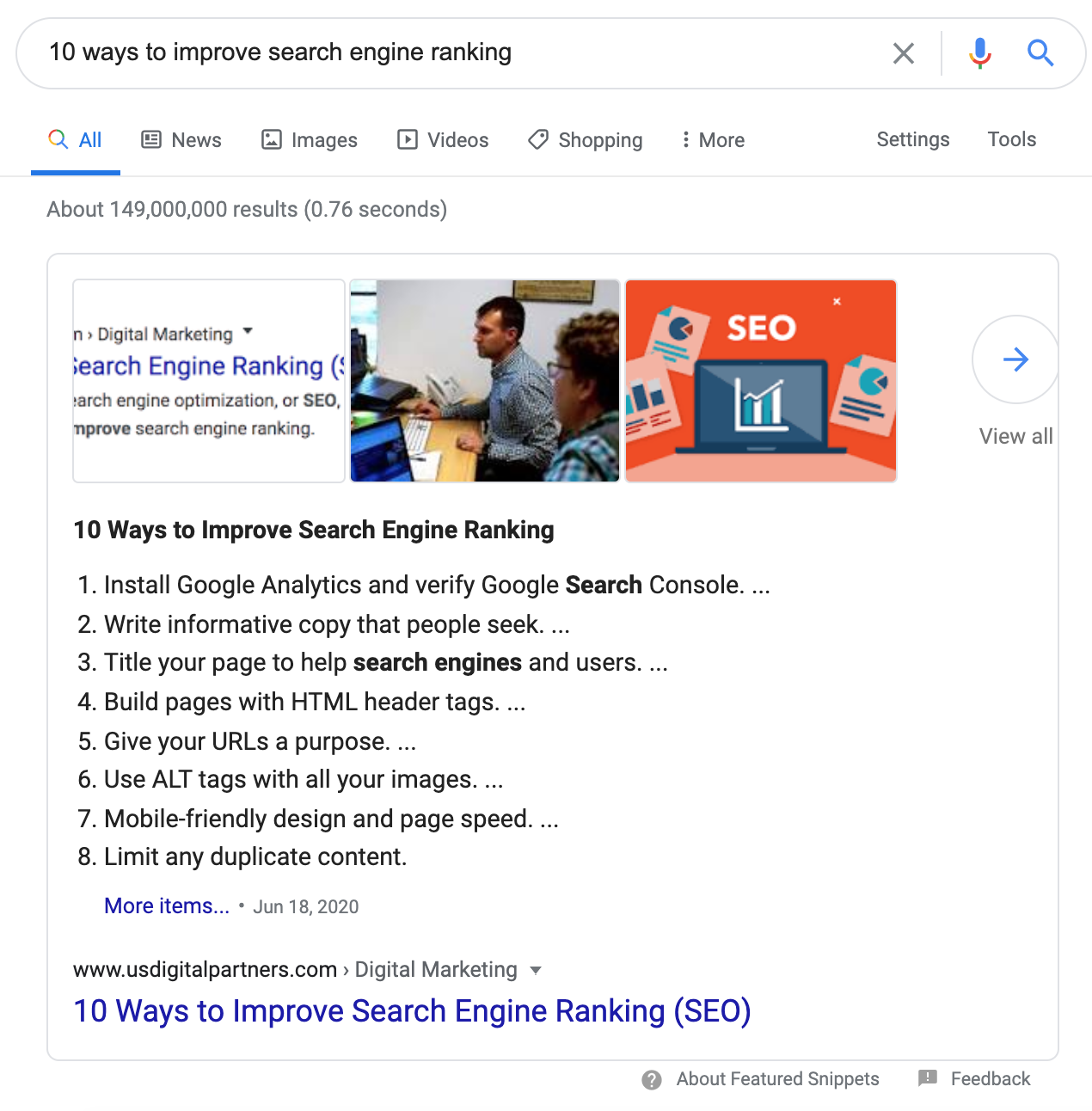How to Create SEO-Friendly Blog Posts
You may be writing great blog posts, but not getting the organic traffic you thought you would. Here's how you can create SEO-friendly blog posts.
Posted: Aug 21, 2020
Last Updated: Aug 21, 2020

As a marketer or website owner, you may know the importance of creating blog posts to increase your authority and presence online. Maybe you have worked tirelessly to write perfect blog posts with excellent content. Yet, you are not getting the organic traffic you thought you would. You may have even worked to improve your search engine rankings across your website. But, you still find yourself wondering if there is more you can do. Luckily, we have put together a few tips for you on how to create SEO-friendly blog posts.
Creating an SEO-friendly blog post
With a few relatively easy steps, you can fully optimize your blog posts for SEO. These steps will help you rank higher and bring more traffic to your posts.
1. Plan your post with keyword research to target long-tailed keywords or phrases.
Having a specific long-tailed keyword for a blog post is arguably the most important step in improving SEO. You want this phrase to be the main focus of the post. Long-tailed keywords are phrases that are longer and typically have less competition because they are narrowed down to a niche topic. A good way to start research is to use a frequently asked question that your customers might be asking as your keyphrase (such as how to create SEO-friendly blog posts).
Strategically choose 1-3 focus keyphrases to use throughout your blog post
Once you choose your keyphrase, you want to use it throughout your blog post to increase your chances of ranking for the phrase. There are several different theories on how often you should use it. If you use it 4-6 times you should be covered. However, only use it if it makes sense. If it feels forced, don’t use it.
Also, try using its common variations. Search engines have gotten smarter and recognize the common variations.
Lastly, try using it in the first 100-150 words of your post to make it easier for search engines to find your blog post. It will also help set the context of the post early on.
2. Create Topic Clusters
Topic clusters are a relatively newer idea when it comes to creating SEO-friendly blog posts. HubSpot and Anum Hussain have done a good bit of research on their effectiveness. Creating topic clusters involves:
- Creating one pillar content page that broadly outlines a topic
- Developing cluster content (multiple posts) that each focus on one long-tail keyword
- Hyperlinking among the cluster content and back to the pillar page
This may sound intense, but for most uses, it can be simple.
Choose the broad topics you would like to rank for, make that pillar page, and create content based on key phrases for each topic. This will not only help in generating the content but will help your entire blog have a clear structure, making it easy for search engines to crawl it. Topic clusters will also make it easier to create an internal linking strategy.
3. Form an internal linking strategy
Linking strategy is often an overlooked part of optimizing a blog post for SEO. Internal links are links within your blog post to other parts of your website or other blog posts. This keeps users within your site (which is always better for SEO) and also helps keep relevant pages at the forefront.
4. Use Schema!
Schema is important to use throughout your website but especially in your blog posts. Essentially, schema is code that tells search engines what each part of your content is. Thankfully, Google has a free structured data tool to help you markup your site. If you have any trouble, you may need a developer to help you.
This will also greatly increase your chances of getting a featured snippet. These are the preview boxes that show up at the top of the Google Search results and are arguably the best place in the search results.

5. Create meaningful structure with headings and subheadings
A strong title tag makes your blog post more relevant and increases the chances of someone clicking on your blog post. To create SEO-friendly blog posts, use your focus keyphrase in the title tag and h1 tag.
Use other headings and subheadings to create a clear structure for users and search engines to follow. Try including keywords in headings where it makes sense. Using the question form of your key phrase in the H2 has seen to increase the chances of being in the featured snippet.
6. Make sure your content is long enough
How long your blog post should be is highly debated by SEO pros. The most common suggested length is 1,200 words. However, quality is always better than quantity. You want your blog post to be comprehensive and provide value. Expand on sections, add imagery, go into some detail, but avoid using fluff. As with keywords, only add content if it’s meaningful.
7. Use natural language like you are speaking to a friend
You want your blog posts to be readable by humans and search engines. Write blog posts to be conversational like you are speaking to your friend. Some tips include:
- Avoid too much unnecessary industry jargon
- Limit difficult words (considered words with four syllables)
- Use transition words
- Avoid too many abbreviations
- Utilize tools like Yoast to check your readability
- Use clear, short paragraphs
8. Optimize Older Blog Posts
Don’t forget any previous blog posts you have written. You wrote them for a reason. Occasionally go back to those posts and look for new ways to optimize them. This could include adding new internal links to new content and looking for SEO gaps. Track their search engine rankings to see where you stand. If the content is outdated, then refresh the content and republish with a note signifying the original date and the updated date.
9. Include a Table of Contents at the Top of the Post
Last but not least, a great way of how to create SEO-Friendly blog posts is to include a table of contents of the headings at the top of the post. The table helps with keyword density and readability which will help with your posts SEO. It will also create an easier user experience for the reader as they can easily jump around to find the information they are looking for. Check out the example we have at the top of this post!
If you have any questions about how to create SEO-friendly blog posts, please reach out to us!

Emmy Stephens
Digital Marketing Analyst